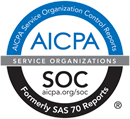Hi,
How to improve performance a dedicated server.
Performance a dedicated server.
-
greennevaeh
- Posts: 7
- Joined: Thu Jan 22, 2015 4:18 pm
Re: Performance a dedicated server.
Performance of a dedicated server is depends on the Hardware Resource,Network, applications and bandwidth.
-
daisymorris510
- Posts: 10
- Joined: Thu Jan 22, 2015 3:50 pm
Re: Performance a dedicated server.
For improve a dedicated server performance is maintaining a server. To keep a server running and minimize downtime, the owner needs to monitor the server, ensure it is clean, update the OS regularly, scan for viruses, and remove old files.
-
adrianjohnson165
- Posts: 8
- Joined: Thu Jan 22, 2015 5:00 pm
Re: Performance a dedicated server.
How to Get the Most Out of Your Dedicated Server
Adjust the priority settings first. Adjusting your priority settings is one of the simplest and most efficient ways to optimise a server.
2. Improve JavaScript delivery.
3. Make security a top priority.... 4. Think about using a proxy server.
5. With ReliableSite's assistance, customise your dedicated server.
Adjust the priority settings first. Adjusting your priority settings is one of the simplest and most efficient ways to optimise a server.
2. Improve JavaScript delivery.
3. Make security a top priority.... 4. Think about using a proxy server.
5. With ReliableSite's assistance, customise your dedicated server.
Re: Performance a dedicated server.
1. Turn on caching.
Caching is perhaps the single most important step in enhancing your server's performance.
In several of the sites we handle, we were able to reduce load times by more than half.
The server does not have to spend time getting files from the disc, executing application code, retrieving database information, and putting the result together into an HTML page when caching is used. EACH TIME A PAGE IS REFRESHED
2. Create a quick reverse proxy server.
A visitor's browser receives HTML files from your server.
What if another visitor makes a similar request?
Normally, your server retrieves the scripts from the disc, runs them, fills in the data, and puts the HTML page together. But wouldn't it be much easier and quicker to simply deliver that file from memory?
A HTTP reverse proxy does this. It sits in the middle of your server and your visitors. If a second consumer requests the identical file, it will be swiftly served from memory. That’s super quick.
3. Select the appropriate application server
Many application owners rely on programmed that come pre-installed on their servers.
CentOS servers, for example, utilize PHP 5.4 rather than PHP 7.2 with FPM (FastCGI Process Manager), which provides significant performance advantages.
Owners of VPS, Cloud, and Dedicated servers are frequently uninformed of the distinctions and continue to try to improve their site code to address performance difficulties.
We've been able to boost application load times by more than 100% in some situations by simply changing the application server, modifying the parameters to fit the site load, and activating caching.
Caching is perhaps the single most important step in enhancing your server's performance.
In several of the sites we handle, we were able to reduce load times by more than half.
The server does not have to spend time getting files from the disc, executing application code, retrieving database information, and putting the result together into an HTML page when caching is used. EACH TIME A PAGE IS REFRESHED
2. Create a quick reverse proxy server.
A visitor's browser receives HTML files from your server.
What if another visitor makes a similar request?
Normally, your server retrieves the scripts from the disc, runs them, fills in the data, and puts the HTML page together. But wouldn't it be much easier and quicker to simply deliver that file from memory?
A HTTP reverse proxy does this. It sits in the middle of your server and your visitors. If a second consumer requests the identical file, it will be swiftly served from memory. That’s super quick.
3. Select the appropriate application server
Many application owners rely on programmed that come pre-installed on their servers.
CentOS servers, for example, utilize PHP 5.4 rather than PHP 7.2 with FPM (FastCGI Process Manager), which provides significant performance advantages.
Owners of VPS, Cloud, and Dedicated servers are frequently uninformed of the distinctions and continue to try to improve their site code to address performance difficulties.
We've been able to boost application load times by more than 100% in some situations by simply changing the application server, modifying the parameters to fit the site load, and activating caching.



